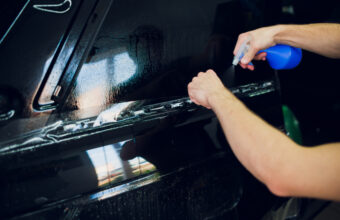Comparing ceramic tint to 3M tint is like comparing apples to oranges, as 3M is a manufacturer that produces a wide range of tinting products, including ceramic tint. However, when people refer to “3M tint,” they typically mean the specific line of window films produced by the company 3M.
That said, ceramic tint is often considered superior to traditional window films, including those offered by 3M, for several reasons…
- Heat Rejection – Ceramic tint typically offers higher heat rejection compared to traditional films. It can block a significant amount of infrared radiation while still allowing visible light to pass through, making it more effective at keeping interiors cooler.
- UV Protection – Ceramic tint provides excellent UV protection, blocking nearly 99% of harmful UV rays. This helps prevent fading of interior furnishings and reduces the risk of skin damage.
- Clarity – Ceramic tint tends to maintain the clarity of windows better than traditional films, which may have a slight tint or coloration that affects visibility.
- Durability – Ceramic tint is known for its durability and resistance to fading, bubbling, and discoloration over time, making it a long-lasting solution for window tinting.
- Non-Metallic – Unlike some traditional window films that contain metal layers, ceramic tint is non-metallic. This means it won’t interfere with electronic devices, such as GPS, smartphones, or radios.
- Appearance – Ceramic tint often has a neutral or slightly gray appearance that blends well with most window types and architectural styles.
While ceramic tint may be considered superior in many aspects, it’s essential to evaluate specific products from both ceramic tint manufacturers and 3M to determine which one best meets your needs in terms of performance, price, and other factors. Installation quality plays a significant role in the effectiveness of any window tint, so choosing a reputable installer is crucial regardless of the brand or type of tint you select.






